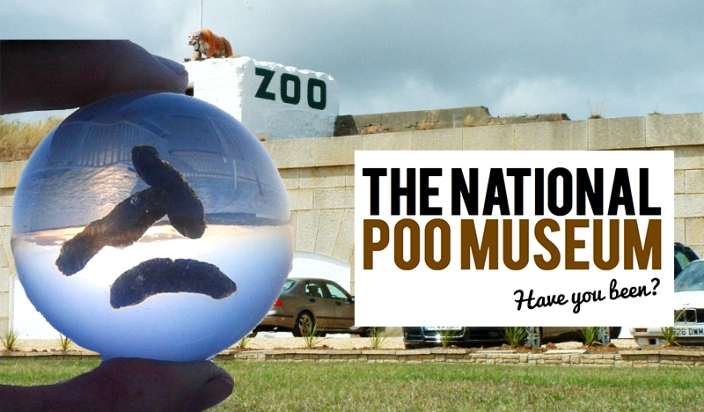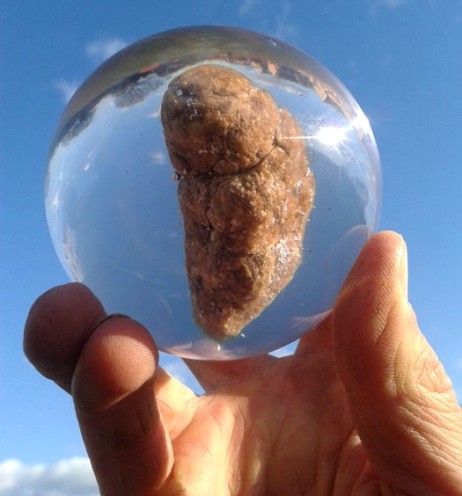

IN THE ODDITIES ARCHIVES
Brain Eaters
KFC
Embalmed Hearts
Tapeworm
Wooly Mammoth
Exorcism
Dog Mummies

National Poo Museum exhibits encourage excitement for excrement
SANDOWN, England, April 4, 2016 (UPI) -- A British museum is offering those with an excitement for excrement to check out several fine fecal exhibits at National Poo Museum.
The museum, which officially opened to the public Monday on the Isle of Wight, was created by the Eccleston George artist collective using animal and human droppings donated by members of the public and the Isle of Wight Zoo and Dinosaur Isle Museum.
The droppings are displayedin illuminated resin spheres after being preserved in a specially-designed drying machine.
"Poo is all around us and inside us, but we ignore it," co-curator Daniel Roberts told the BBC.
Another co-curator, Nigel George, said poo "provokes strong reactions" in people.
"Small children naturally delight in it but later we learn to avoid this yucky, disease-carrying stuff, and that even talking about poo is bad," he said. "But for most of us, under the layers of disgust and taboo, we're still fascinated by it."
The museum is planned to remain on the Isle of Wight through the end of the summer before going on tour.
See the article HERE




From the gut to poo: What is in your intestines?
The digestive system is home to trillions of micro organisms colonizing the gut making an amazing ecosystem all living together in harmony called the gut flora. A healthy adult has about 2kg of these bacteria in the gut. All these bacteria live in a highly organized micro-world with certain species predominating and controlling others. They play a number of vital roles in the body and without them we probably would not survive.
The more modern-day science advances, the more we learn about human health. It is absolutely imperative that we take care of our gut flora, as an abnormal or damaged gut flora is the main root cause of many diseases today. By taking care of our gut flora, we may prevent or even reverse diseases like: heart disease, auto immune diseases, allergies or even cancer.
Most of the microbes associated with humans appear to be not harmful at all, but rather assist in maintaining processes necessary for a healthy body. A surprising finding was that at specific sites on the body, a different set of microbes may perform the same function for different people. For example, on the tongues of two people, two entirely different sets of organisms will break down sugars in the same way. This suggests that medical science may be forced to abandon the "one only" microbe model of infectious disease, and rather pay attention to functions of groups of microbes that have somehow gone awry.
How do we maintain healthy gut flora?
When we think about microflora and restoring gut bacteria, probiotic supplements are generally the first thing that comes to mind—but that’s just one thing that needs to be considered. You could take a boatload of probiotics, but it wouldn’t do much good if your lifestyle continues to include habits that damage gut bacteria, such as taking antibiotics and drinking highly chlorinated water.
The beneficial microflora in and on your body need a stable environment in which to grow and flourish. We know that the ideal pH in the colon should be between 6.7 and 6.9. A pH of 7 is neutral—anything lower than 7 is acidic and anything above 7 is alkaline. The colon needs to be slightly acidic, which inhibits the growth of undesirable bacteria like Salmonella, Shigella, and E. coli.
The best way to restore beneficial bacteria in the gut is to create acidity, which promotes the growth of various Lactobacillus bacteria—the ones with well-known beneficial effects.
One of the best things you can do to enhance and improve gut flora is to regularly eat foods that contain a lot of friendly probiotic bacteria—specifically traditional fermented foods. You may also hear these dishes be referred to as "probiotic foods."
See the article HERE
